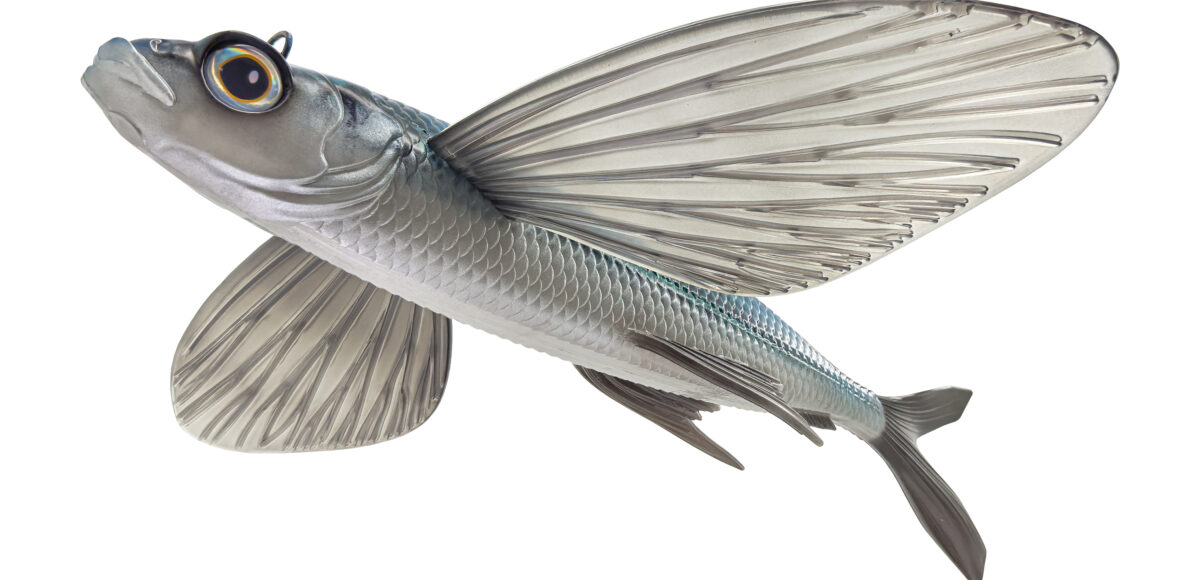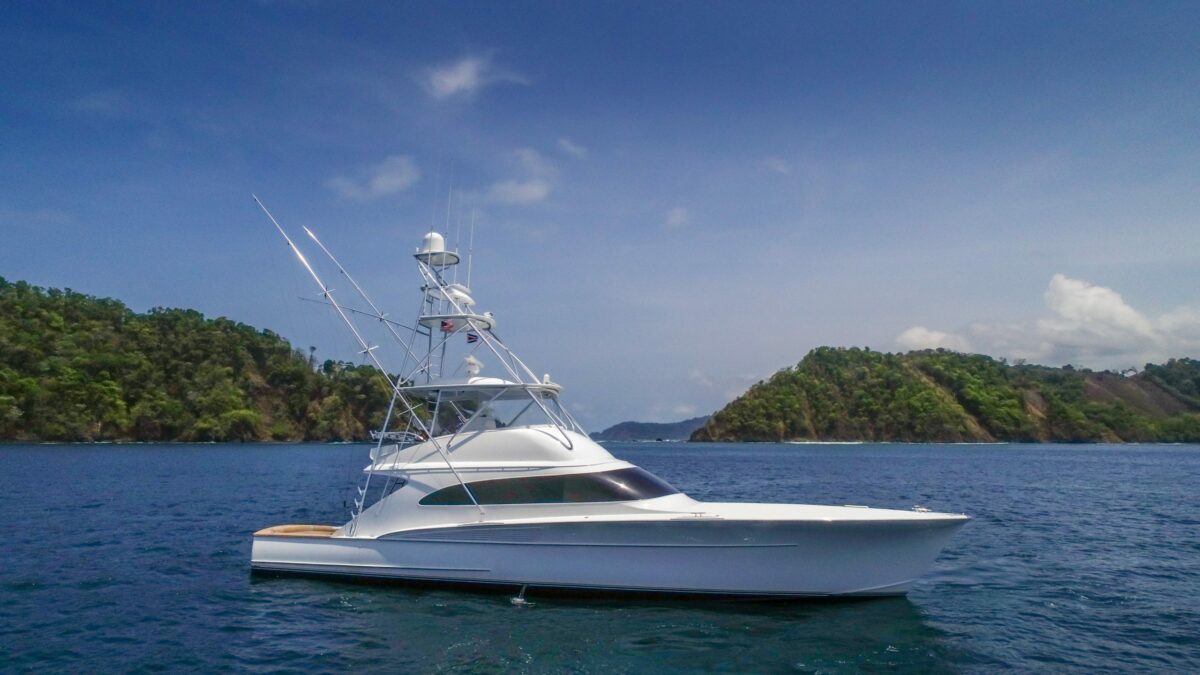Table of Contents
If you’ve spent any length of time pulling trolling lures in search of blue marlin, you probably have a few overflowing plastic bins full of them somewhere on the boat or in your garage. As fishermen, we’re naturally drawn to check out the new thing that’s catching, the flashy color or shape you’ve never seen before at the tackle shop, or the old classic that you came across at that garage sale last year. But with all those choices, the truth is you can only pull four or five lures at a time and selecting your best offshore lures can be tricky. So how do you go about making the call on picking your starting lineup for the day? I know if I’m freelancing on a boat I haven’t fished on often, my picks are usually the lures with the most scratches on the heads. I had the good fortune of spending time in Kona, Hawaii pulling lures almost exclusively and working around some of the most experienced lure fishermen and lure makers in the world. Watching, discussing, and scrutinizing these practical pieces of art are a daily occurrence on the Big Island. And while that particular fishery is a very unique one, the general principles and physics of lure fishing remain the same around the world. There are tons of choices out there, so the goal here is to give you a better idea of what to grab out of the tackle room when it comes time to pick the day’s offering.
Angle Faced Lures
For some of the more technical aspects of artificial lure trolling, I’ve enlisted the help of Nick Durham of Tantrum Lures, a meticulous Australian lure maker and crewman now based in Kona. He describes the physics of how a trolling lure works: “Based on the notion that an angle-faced lure should always be running upright, the angled face creates lift and causes the lure to continually attack the surface of the water. This is why they never lose their smoke if running correctly. When an angle-faced lure does lose its smoke, it means that it has either rolled over on its side or upside down. This is why a lot of older angle-faced lures without keel weighting will not run well with a single hook rig, but will run fine with the old school 180-degree double hook rigs that were used when these lures were popular. The harder the angle on the face, the harder the lure will attack the surface. This is why the harder cut lures are generally only effective in calm waters. Forward taper on the head can make the hardcut lures more forgiving as it enables the lure head to penetrate the water more easily. The key to this style of lure is finding the happy balance with face angle, weight and taper. A double tapered head, as in forward taper at the front and backward taper at the back of the lure head, will create wiggle. Shapes like my Bandit, a Black Bart Braziliano etc. come to mind.”
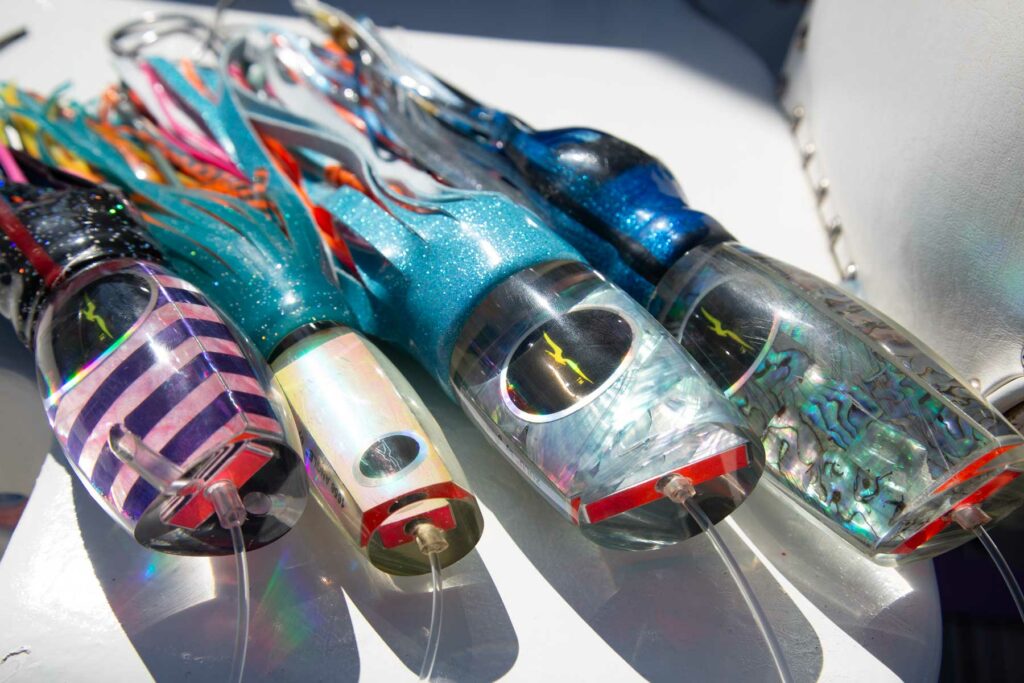
Lure Behavior
I believe that the action of a lure is the most important factor to a lure’s success, and the sea conditions are the most important aspect of determining what type of action you can get out of your lures on that particular day. If it’s flat calm then your options open up; if it’s rough then you’re limited to things that will actually swim in those conditions. To entice a strike out of a billfish, you want to keep the lure in the water as much as possible. The popping and blast of an aggressive shape can be the difference maker in getting a lazy marlin to rise from the depths. But you want to ride the line of getting the most action out of the bait without it flying out of the water or skipping flatly across the surface. The vast majority of trolling lures are meant to be pulled on the front part of the pressure wave. This is where they look and perform the best, are the easiest to see from the boat, and will keep the action most consistent. Any change in speed or direction up, down or side to sea can change the size and spacing between these pressure waves and many lures will require a slight adjustment in or out accordingly. Rigger angle is also worth mentioning. Durham mentions that you’ll see higher riggers amongst the Kona fleet versus anywhere in the world because of the consistently calm water. In calm conditions you can really keep the rigger clips high, and the higher up the leader angle, the more action you’ll get out of your lures. But many fisheries don’t have the luxury of calm water while marlin fishing, so adjust your riggers accordingly and try to split the difference between lure action and keeping everything from flying out of the water.

Terminology
So what makes a lure perform the way that it does? The shape, cut, and weighting of the head are the main factors that contribute to action. There’s a plethora of variations, but the main shapes we’ll discuss here are plungers, tubes, straight cut (hard or soft heads), tapered heads, chuggers, and bullets.
Plungers are an all-around popular shape. They’re usually very consistent and run in a variety of conditions, diving down and then coming up to the surface and creating a “pop” on the surface with a consistent interval. Plungers are some of the most classic, the Joe Lee Super Plunger being one of the most famous.
- Tubes often have a face angle similar to that of a plunger but the body of the lure is straight and cylindrical. Popular models include the Tantrum Tube, Marlin Magic Henry Chee and the Aloha Lures Smashbait. This shape is pretty aggressive, going underwater for short intervals, often making a “mole-hill” barely under the surface of the water until it comes up to create a blast of water. These are among my favorites, especially in one of the short positions. A small tube running properly can often create a bigger profile in the water than the size of the lure will suggest. The downside of the tube shape is that it often won’t swim properly if the conditions get rough, as it needs pretty smooth water to run the way that it’s meant to.
- Straight or “90-degree cut“ lures like the Tantrum AMN, Koya Hard Head, or the MoldCraft Wide Range have been a staple of spreads for years. Even though these lures are often relatively lightweight, they’ll often hang on during rough days and can be used in a variety of positions, especially in one of the riggers or shotgun positions. They dive down and wiggle in the water and produce a very consistent popping action on the surface. I won’t get into the hard or soft debate much in this article because both have proven to be productive in their own right. I agree with the notion that a fish will grab and hold a soft headed lure longer, as there have been many caught on this style being pulled as a teaser with no hooks in them whatsoever! While that’s not ideal when teaser fishing, it does prove the idea that a fish may be willing to hold on to a soft lure longer.
- The “tapered head” style of lures include shapes like the Koya Poi Dog, Tantrum Bandit, and Marlin Magic Ruckus. This is a large class of lures and some stay in the water during rough conditions better than others based off the cut of the face. The sharper the angle the more aggressive, and therefore the calmer the water it thrives in. Shorter versions have more wiggle and longer versions are a bit more stable. These lures provide pretty heavy action and produce a large profile in the water. They usually thrive as a corner lure or in the rigger positions depending on the size that you’re pulling.
- In the chugger/invert section, I’ll include lures that have an inverted head or scoop built into the face. A few of my favorites are the Black Bart Blue Breakfast, Aloha Lures Beauty, and Head Sea Barry Jr. There’s a wide selection of variations on this idea but overall most of these have a diving, wiggling action underwater and a fairly aggressive pop on the surface. Head shapes with this type of feature sometimes include jets to produce a smoke trail behind the lure and usually create a larger profile in the spread than the size of the lure may appear. They’re also able to stay in the water in rougher conditions.
- Bullets are straight running lures that sometimes include jets cut into the head to create a smoke trail. The action I’m pursuing with these lures is a “dishrag” look where the bullet occasionally pops the surface and spends most of its time wiggling at or just below the surface. I usually use these as my long rigger and/ or shotgun position to entice a lazy fish that may not want to go after one of my more aggressive swimming offerings. It’s also useful as a last resort when a fish may have missed another lure in the spread and is looking for one more shot as it fades back out of your spread. I think that people often underestimate the effectiveness of these shapes, assuming they’re more effective when targeting species like tuna or wahoo, but in my experience in Kona they’ve probably produced as many blue marlin bites as anything else.
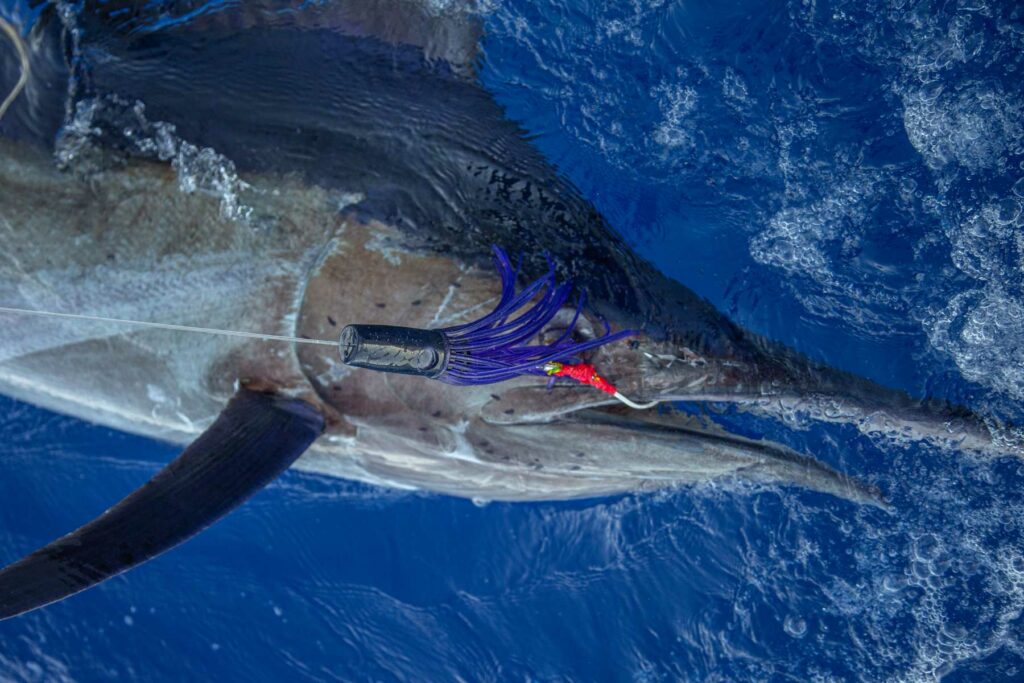
Lure Weight
As you’d expect, the weighting of lures can vary widely. As a general rule, a heavier lure will stay in the water better but may sacrifice a bit of action. But that’s not to say that a light lure won’t work in rough water, as many of the lightweight straight cut lures work great in snotty conditions. Keel weighting is utilized by some lure makers to ensure that a lure always stays in the natural, upright position to which it’s designed. You can tell if a lure is properly keel weighted by placing it on a flat surface in various positions and seeing if it returns upright. All lures aren’t made this way, and plenty catch fish without this feature, so this comes down to personal preference in finding the action you’re looking for.
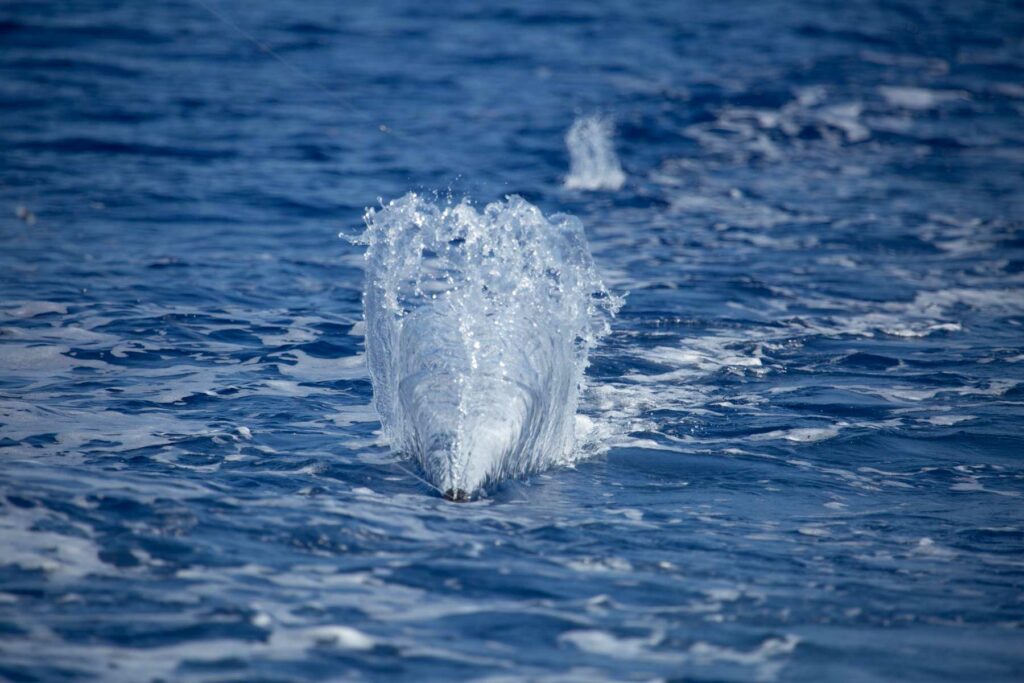
Color
Color may be one of the most debated aspects of lure fishing. I’ve caught marlin on colors all over the spectrum but the old standbys of some combinations of blue, black, and purple are among the most popular, with combinations of greens, yellows, and pinks as inner skirts are probably the ones I rig most consistently. As for materials, I generally rig a vinyl outer skirt on my larger and more aggressive lures. Durham agrees and says using vinyl on these types of shapes seem to make them run better and have less tangles, more smoke, and a clean transition from the lure head to the skirt without the bulge that some rubber skirts create. For my bullets I usually run either rubber skirts or the newer mylartype flashabou skirts. I’ve had a lot of success with the flashabou type of skirt on my bullets, but this type of hair is easily tangled if you attempt to rig them on a pushing style lure. All this being said, plenty of fish have fallen to browns, golds, reds and every other color combination you can imagine. I know a lot of guys who like to pull one lure in the spread that is brighter or stands out from the rest of the spread, just to give the fish something different that sparks their interest. I’ve had success with this as well, and it makes practical sense to me. Speaking with scientists on this subject, most believe that color isn’t as big a factor to fish as it is to the fishermen that are purchasing these lures.
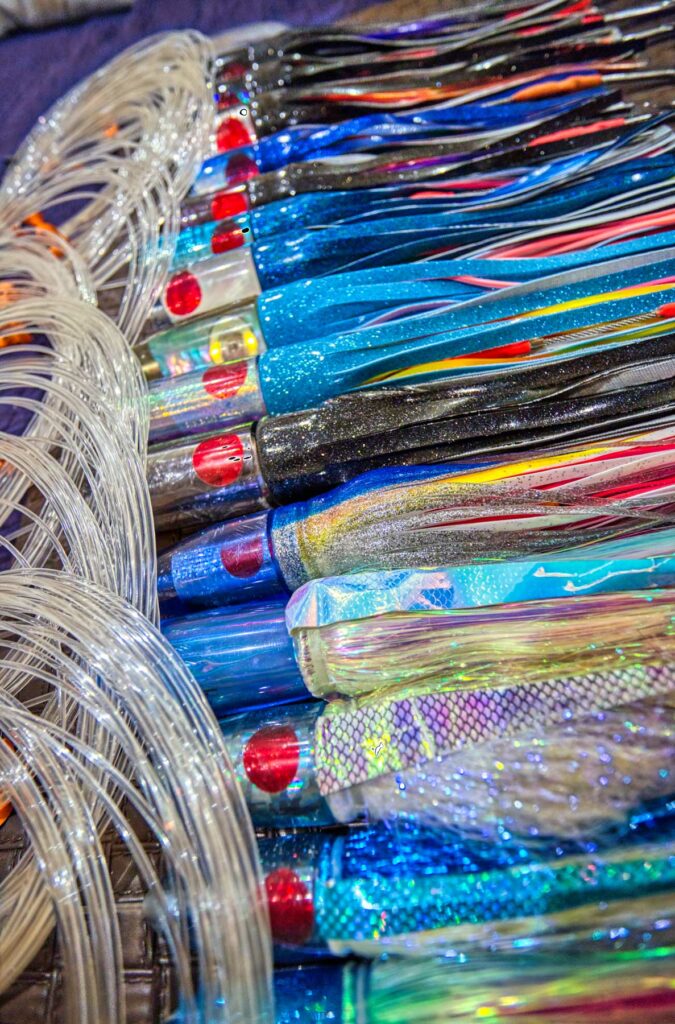
The Starting Lineup Your Best Offshore Lures
It’s important to think about your spread as a whole when picking out your lures for the day. The traditional Kona spread is starting with larger and more aggressive lures closer to the boat with lures getting smaller and swimming straighter as you go back. Big tubes, slant heads, and aggressive shapes are your short and long corners (left and right short). We typically use smaller/medium sized lures on your second tier (right and left long riggers) plungers, hard or soft heads, maybe a smaller tube or slant head, bullet if you’re going with smaller spread. If you’re pulling a shotgun/stinger, something smaller and straight swimming is my standard. I’m typically pulling a bullet in this spot but there are other options and you can get creative here if you want. I like a softhead in this position in a tournament but I’ve seen guys pull large bombs here too. The way I like to think about this spread design is that a larger or more aggressive fish is going to swim right up to the transom to attack one of your lures that is also larger and more aggressive, while the straighter swimming or smaller lures behind may entice a fish that doesn’t want to expend as much effort. This idea also works with what we mentioned with bullets earlier. If a fish misses a lure closer to the boat, it’s got another shot at an easier target as it fades back in the spread. One exception that Durham mentions to sizing down as you go back through the spread is when using dredges. Most scientists that I’ve spoken to agree that color is more important to the fishermen purchasing lures than it is to the fish, but I’ll leave that debate to the comments section.
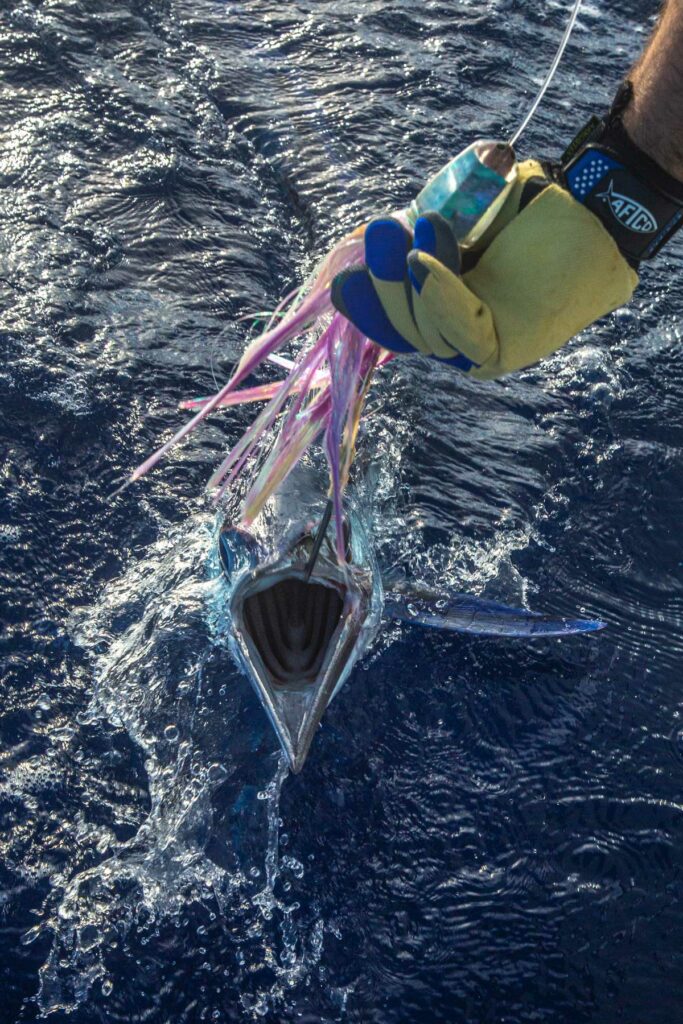
Find What Works Best
In the end, there’s no substitute for going out and running a spread and experimenting in different conditions so you can see what works for yourself. No amount of reading, watching YouTube videos or research can take the place of time at sea, and fishing lures is no different. Each boat is different and each fish is too. The idea of time-over-target is a key concept to keep in mind too. It’s no coincidence that often a lure that a captain has had the most bites on is also the one that never leaves the spread. The more it’s out there, the more chances a lure has to receive strikes. It’s impossible to quantify but almost every captain I’ve spoken to on the subject mentions the impact that confidence in your spread has on results. Your belief in your spread trickles down to the rest of your fishing and the results will speak for themselves. But as Nick mentions, we’re all guilty of using our heart instead of our head in lure selection, forcing a lure that has been productive into the spread when conditions don’t allow for it. The bottom line is to find what works best behind your boat, in the conditions you’re given, and run what you’re most confident will get a bite.
Don’t Forget to Check Out Our Sportfishing Job Board! Did You Know? It’s the perfect platform for seeking skilled captains and mates. Whether you’re on the hunt for your dream team or looking to join one, your next big adventure begins here. Explore the opportunities now! Click Here
Dive Deeper into the World of Sportfishing
Unlock Exclusive Savings: Enjoy 50% Off Your Subscription!
Are you ready to explore the thrilling world of sportfishing from the comfort of your home? Subscribe now and embark on a journey filled with captivating stories, expert insights, and insider tips. Choose between our digital or print edition and secure an incredible 50% discount on your subscription.
Subscribe today and get ready for an adventure like no other. Click here to subscribe and elevate your sportfishing experience with InTheBite Sportfishing Magazine.












